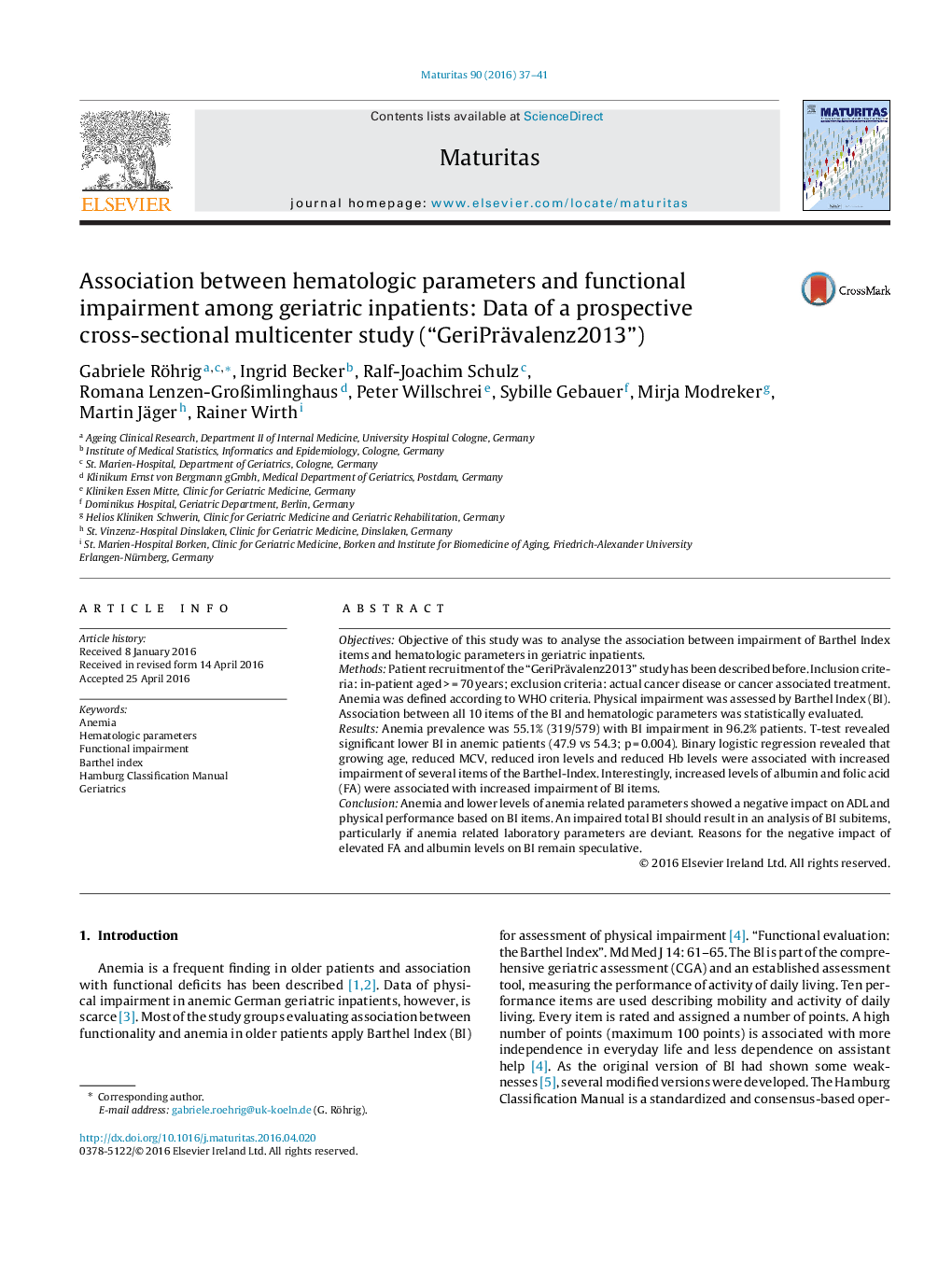| Article ID | Journal | Published Year | Pages | File Type |
|---|---|---|---|---|
| 1916971 | Maturitas | 2016 | 5 Pages |
•Significant lower Barthel Index in anemic geriatric patients.•Association of anemia with impaired Barthel Index items in geriatric patients.•Association of anemia related parameters with impaired activity of daily living.
ObjectivesObjective of this study was to analyse the association between impairment of Barthel Index items and hematologic parameters in geriatric inpatients.MethodsPatient recruitment of the “GeriPrävalenz2013” study has been described before. Inclusion criteria: in-patient aged > = 70 years; exclusion criteria: actual cancer disease or cancer associated treatment. Anemia was defined according to WHO criteria. Physical impairment was assessed by Barthel Index (BI). Association between all 10 items of the BI and hematologic parameters was statistically evaluated.ResultsAnemia prevalence was 55.1% (319/579) with BI impairment in 96.2% patients. T-test revealed significant lower BI in anemic patients (47.9 vs 54.3; p = 0.004). Binary logistic regression revealed that growing age, reduced MCV, reduced iron levels and reduced Hb levels were associated with increased impairment of several items of the Barthel-Index. Interestingly, increased levels of albumin and folic acid (FA) were associated with increased impairment of BI items.ConclusionAnemia and lower levels of anemia related parameters showed a negative impact on ADL and physical performance based on BI items. An impaired total BI should result in an analysis of BI subitems, particularly if anemia related laboratory parameters are deviant. Reasons for the negative impact of elevated FA and albumin levels on BI remain speculative.
